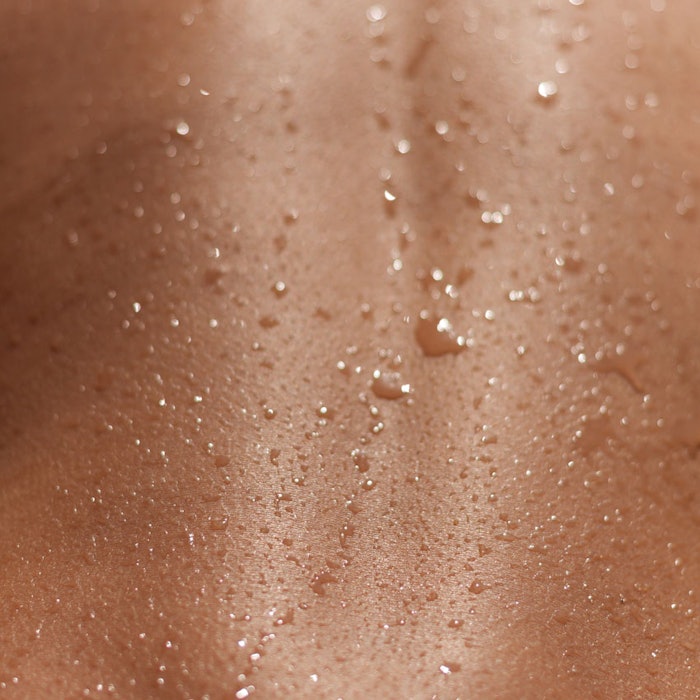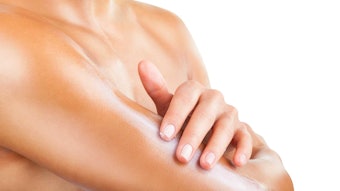
Editor's note: This is the second half of a two-part series that appeared in its entirety in the Cosmetis & Toiletries July/August 2016 issue. Read Part I here.
Log in to view the full article
Editor's note: This is the second half of a two-part series that appeared in its entirety in the Cosmetis & Toiletries July/August 2016 issue. Read Part I here.
Test Sunscreens
In this study, twenty commercial products were used. These had different compositions, Galenic properties and SPF levels. Thus, eleven creams, three milks, one stick and five sprays were tested; the SPF claimed on these products ranged from 20 to 50+. All the criteria characterizing these products, including SPF, appearance and UV filters are listed in the Table 1.
Influence of Substrate Wetting
First, the influence of (i) the quantity of water applied on the surface, and (ii) the wetting mode to obtain a wet substrate were determined. For this purpose, in a first preliminary step, different quantities of water were applied using a 1 mL syringe to a dry substrate at rates between 0.2 mg/cm2 and 0.05 mg/cm2. The tests are performed under the same conditions; i.e. molded PMMA plates and a testing and drying temperature at 25°C. The relationship between the %Weti and CV% with the amount of water applied are visualized by the curves shown in Figure 2.
Based on these results, a nonlinear relationship according to a polynomial regression function provided a good fit with the data. Furthermore, an increase of the %Weti and CV% was observed proportionally to the amount of water applied. Nevertheless, the results at application rates between 0.05 mg/cm2 and 0.1 mg/cm2 were not significantly different. Thus, both quantities were used for the determination of the wetting mode, described in the next step.
Two modes of wetting the substrate also were tested. The first involved applying 0.05 mg/cm2 of distilled water in the center of the plate by means of a 1-mL syringe. Then, the water was manually and homogeneously spread using strokes across the totality of the substrate. The second method used a spray approach, where the spray applicator was positioned 30 cm from the substrate and sprayed ~0.1 mg/ cm2 of distilled water onto the plate. In both cases, immediately after wetting the substrate, the product was applied and spread. These two wetting modes were tested with nine solar products under the same conditions; i.e., molded PMMA substrates, and a testing and drying temperature at 25°C. These assessments aimed to determine whether the method to wet the substrates influenced the resulting percentage of wet skin application of the products tested.
Based on the results of %Weti, s, CV% and %Wet, shown in Table 2, the two substrate wetting modes produced relatively equivalent wet skin application results. The %Wet was less than 10 percentage points for five products out of nine, and conclusions indicating if products were wet skin applicable or not were identical for eight products out of nine (except for the product P1). Finally, the mean CV% was slightly higher when wetting the substrates with a spray rather than the syringe. Therefore, it was concluded that the two wetting modes had a slight influence on the percentage of wet skin application calculated.
From a practical point of view, the spray wet the plates in a heterogeneous way whereas the syringe spread in a homogeneous way. It also would be easier and more reproducible for laboratories all over the world to control the quantity of water applied to substrates using a syringe. So, based on these results, the wetting mode using a syringe was found to give more reliable results, so it seemed more judicious to use this approach for the final method.
Influence of Temperature
The wet skin application tests require evaluations on dry and wet substrates separately—i.e., the same dry substrate to determine SPFdry cannot determine SPFwet–thus, the tests were performed under the same conditions using molded PMMA plates and the syringe wetting mode for all 20 sunscreen products. According to a previous publication,7 a difference in drying temperature between dry and wet substrates should not affect the final relative results. Thus, during product application and spreading, a temperature of 25°C was maintained but the drying temperature varied between 25°C and 35°C for the wet and dry substrates.
From the results shown in Table 2, the wet skin application percentages for each product when dried at 25°C were relatively similar to those obtained at 35°C; i.e., the %Wet was less than 10 percentage points for 14 products out of 20. Furthermore, only product P1 was considered wet skin-applicable at 35°C but not at 25°C, although the results were similar; %Wet = 44.3% at 25°C and 51.1% at 35°C.
Therefore, the influence of the temperature during all steps of the wet skin application test was of interest. Another previous publication had demonstrated8 the influence of temperature on substrate surfaces during the in vitro determination of absolute SPF value. Indeed, more than 80% of the sunscreen products tested were sensitive to this parameter. So, to assess whether this parameter has an influence on the wet skin application test, five sun care products were tested at a temperature of 25°C and 35°C for the wet and dry substrates during the totality of the test—i.e., application, spreading and drying steps—using the same previous test conditions. As shown in Table 2, the wet skin application percentage obtained for each product was significantly different according to the test temperature. This led to different wet skin conclusions for two products out of five.
Indeed, product P5 was considered wet skin-applicable at 25°C whereas it was not at 35°C; the reverse was true for product P12. Furthermore, the CV% was clearly lower when the temperature during the totality of the test was 25°C, compared with 35°C. These observations confirmed, as was expected, that the temperature used during the test had a significant influence on the wet skin percentage obtained, even as a relative value. Thus, during the totality of the protocol, the temperature on the surface substrate was retained at 25°C.
Influence of Substrate
The final parameter with potential to influence the wet skin percentage was the substrate used. For this assessment, two kinds of PMMA substrates were used: molded and sandblasted. Indeed, it has previously been demonstrated that the roughness level and reproducibility of the surface characteristics of substrates are important factors to explain values and variability obtained from in vitro solar tests. Moreover, it has been shown that the determination of only one roughness parameter is not sufficient;9, 10 thus, topographical parameters were controlled by a profilometer, in compliance with parameters already published.10, 11
Taking into account that the quantity of product is linked to the roughness of the substrates, to obtain a homogeneous and reproducible layer, products were applied at a 1.3 mg/cm2 application rate on the molded plates, whereas on the sandblasted plates, 1.2 mg/cm2 was applied. To study the influence of this parameter, 20 products were tested with both substrates under the same testing conditions; i.e., wetting using a syringe, and a testing and drying temperature of 25°C.
Based on the results shown in Table 2, nine products out of 20 did not obtain the same wet skin application conclusion with the two different substrates, and only seven out of 20 had similar percentages with a difference of less than 10 percentage points. Moreover, the CV% obtained for the sandblasted substrates were higher in most, compared with those obtained for the molded substrates—respectively, a mean CV% of 33.0 and 17.5. Therefore, the choice of the substrate also had a significant influence on the wet skin application percentage. Since the PMMA molded plates provided more reliable results, they were used.
Final Protocol
According to the above results, a final protocol was established; shown in Table 3.
Method Validation
To confirm this method, it is important to check that it is repeatable and reproducible in a first instance, and selective in a second instance. For this purpose, 20 sun care products were tested using the parameters previously selected; i.e., molded test substrates, syringe wetting mode, and a testing and drying temperature at 25°C.
First, as previously explained, the mean of individual CV% or "Mean Intra" was calculated using the final protocol from the same operator and same products. The results are shown in Table 4. Based on the tested products, the mean CV% was equal to 17.5%, which seems suitable using the same testing conditions. Furthermore, the CV% was higher, 20%, when the product tested was an alcoholic spray (products P8, P11 and P19). This fact could be explained due to the difficulty of applying this kind of product to the substrate due to its quick evaporation. Regardless, this intrinsic variability was already taken into consideration in the final %Wet result.
The test also was reproduced by three different operators (OP1, OP2 and OP3) working in the same laboratory with two different products—one considered wet skin applicable, the other not. The CV% between operators or "Mean Inter" was been calculated and the results obtained are shown in Table 5. This showed that regardless of the operator performing the test, the wet skin percentage obtained was similar for each product tested. Indeed, the results obtained had a difference of less than 10 percentage points and the %CV was clearly lower, to 20% "Mean Inter." These results indicate this method is both repeatable and reproducible.
Second, regarding the selectivity of results, in Table 5, seven products of the 20 could be considered wet skin applicable, with the mean wet skin percentage for the 20 products at 42.9%. These results indicate the test is selective enough because all the products are not considered wet skin and the mean is close to 50%. Furthermore, we can see that the products considered as wet skin applicable have Galenic properties, compositions and levels of protection that are significantly different. This analysis indicates the new method works with every product type.
Conclusion
The aim of this study was to develop a standardized in vitro method to determine the wet skin application factor of solar products. To optimize this method and reduce the variability causes, several parameters were tested to identify and master their influence on the final wet skin percentage. These parameters included the substrate choice, wetting methods of the plates and temperature during the totality of the test. The results obtained identified the PMMA molded substrates, the wetting mode with a syringe, and a drying and testing temperature of 25°C provided the best results with a low variability.
The selectivity of the test was verified as well; 20 commercial products were tested using these parameters and only seven of them were considered wet skin applicable. Furthermore, the repeatability and reproducibility of the method was tested for the results obtained by different substrates (intra) and different operators (inter) for a same product. The mean CV% obtained was < 20% in both cases, and the results obtained for the wet skin percentage was similar. It was therefore concluded that this method is reproducible and repeatable—and, so, reliable.
References
- COLIPA, Guidelines for Evaluating Sun Product Water Resistance (Dec 2005)
- D Prettypaul, D Kennedy, A Gripp and H Fares, Dielectric constant to develop clear sunscreens for wet skin, Cosm & Toil 129(2) 86-90 (Mar 2014)
- US Pat 6,197,281 B1, Wet Appliable, Instant Protection Sunscreen and Makeup and Method of Use, assigned to Stewart et al (Mar 2001)
- World Pat WO_2012_149355_A1, Clear Wet Sprays and Gels, assigned to H Fares, D Kennedy and D Prettypaul (Nov 2012)
- M Albuszies and S Müller, Sun sprays—A variety of modern concepts in sun care formulation, SÖFW 141 (Jul 2015)
- BL Diffey and J Robson, A new substrate to measure sunscreen protection factors throughout the ultraviolet spectrum, J Soc Cosmet Chem 127-133 (May/Jun 1989)
- M Pissavini et al, In vitro assessment of water resistance of sun care products: A reproducible and optimized in vitro test method, Intl J Cos Sci 29 451–460 (2007)
- S Miksa, D Lutz and C Guy, UV transmission assessment: Influence of temperature on substrate surface, Cosm & Toil 128(7) 484-494 (Jul 2013)
- L Ferrero, M Pissavini, A Dehais, S Marguerie and L Zastrow, Importance of substrate roughness for in vitro sun protection assessment, IFSCC Magazine 9(2) 2-13 (Apr-Jun 2006)
- M Pissavini, S Marguerie, A Dehais, L Ferrero and L Zastrow, Characterizing roughness: A new substrate to measure SPF, Cosm & Toil 124(9) 56-64 (Sep 2009)
- S Miksa, D Lutz and C Guy, Sandblasting to improve the reproducibility of in vitro dunscreen evaluation, Cosm & Toil 129(3) 30-36 (Apr 2014)
~Cosmetics & Toiletries~










